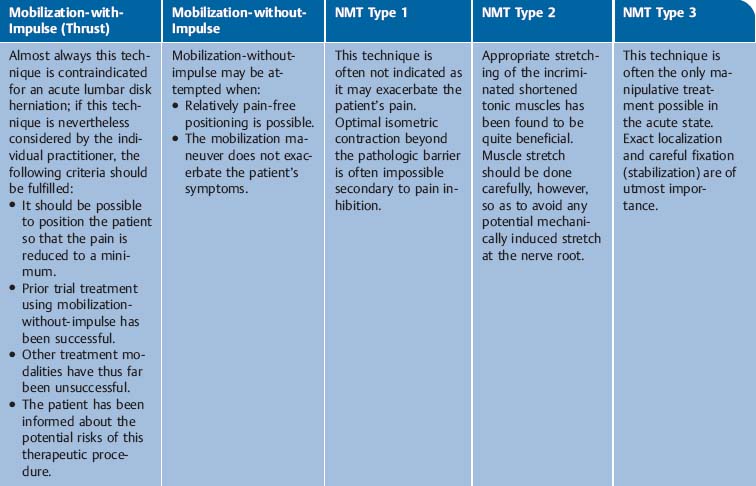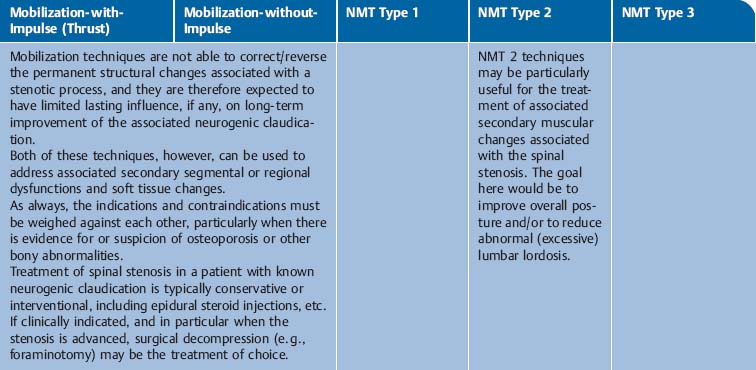9 Indications and Contraindications for Conditions with Potentially Increased Risk of Treatment This chapter provides an overview of the indications and contraindications based on the various primary diagnoses related to spinal pain or disorders associated with the spine. It is assumed that the appropriate diagnostic work-up, medically and surgically, has been performed, and the individual patient’s clinical situation has been evaluated as to candidacy for the specific manual medicine treatment. The following listings are meant to be general guides rather than specific prescriptions for a particular treatment for a given diagnosis. As always, the selection of the most meaningful treatment (s) of choice should be based on multifactorial considerations, including objectively verifiable findings, rational, realistic, and time-contingent treatment goals with specific medical end points in mind, patient response to previous similar or different treatment, patient and physician expectations, and potential barriers to successful treatment, among others. Rather than manipulative treatment alone, the initial management of choice for the acute or subacute lumbar disk herniation should be based on a rationally chosen conservative approach, including medications and the appropriate physical therapeutic regimens. Treatment may also include interventional spine care with epidural steroid injections, for instance (Bush and Hillier, 1991). We refer to the standard texts and the latest literature with regard to the indications for surgery or other interventional spine care. Rather than manipulative treatment, the initial management of choice for the acute cervical disk herniation should be based on a rationally chosen conservative approach, including pharmacologic and appropriate physical therapeutic regimens. In general, treatment can be initiated with the NMT type 3 techniques. Mobilization-without-impulse techniques, when considered, should be applied extremely carefully and gently without much force. Regarding the indications for surgery and/or interventional spine care, we again refer to the standard texts or the most recent evidence-based literature.
Diagnosis: Lumbar Disk Herniation

Diagnosis: Lumbar Spinal Stenosis (Central and/or Foraminal Stenosis)

Diagnosis: Cervical Disk Herniation

Diagnosis: Cervical Spinal Stenosis
Stay updated, free articles. Join our Telegram channel

Full access? Get Clinical Tree








